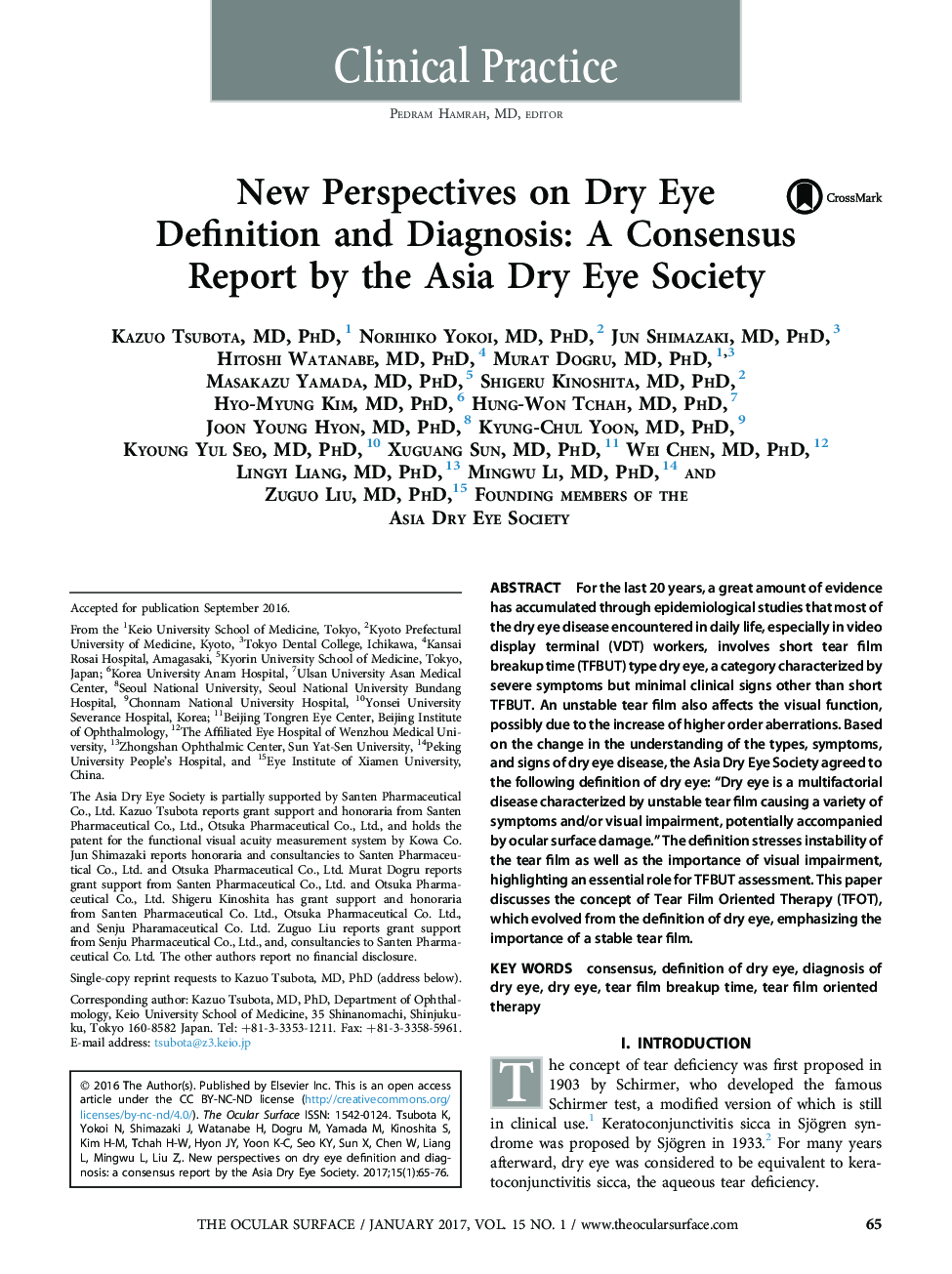| Article ID | Journal | Published Year | Pages | File Type |
|---|---|---|---|---|
| 8591324 | The Ocular Surface | 2017 | 12 Pages |
Abstract
For the last 20Â years, a great amount of evidence has accumulated through epidemiological studies that most of the dry eye disease encountered in daily life, especially in video display terminal (VDT) workers, involves short tear film breakup time (TFBUT) type dry eye, a category characterized by severe symptoms but minimal clinical signs other than short TFBUT. An unstable tear film also affects the visual function, possibly due to the increase of higher order aberrations. Based on the change in the understanding of the types, symptoms, and signs of dry eye disease, the Asia Dry Eye Society agreed to the following definition of dry eye: “Dry eye is a multifactorial disease characterized by unstable tear film causing a variety of symptoms and/or visual impairment, potentially accompanied by ocular surface damage.” The definition stresses instability of the tear film as well as the importance of visual impairment, highlighting an essential role for TFBUT assessment. This paper discusses the concept of Tear Film Oriented Therapy (TFOT), which evolved from the definition of dry eye, emphasizing the importance of a stable tear film.
Related Topics
Health Sciences
Medicine and Dentistry
Ophthalmology
Authors
Kazuo MD, PhD, Norihiko MD, PhD, Jun MD, PhD, Hitoshi MD, PhD, Murat MD, PhD, Masakazu MD, PhD, Shigeru MD, PhD, Hyo-Myung MD, PhD, Hung-Won MD, PhD, Joon Young MD, PhD, Kyung-Chul MD, PhD, Kyoung Yul MD, PhD, Xuguang MD, PhD, Wei MD, PhD, Lingyi MD,
